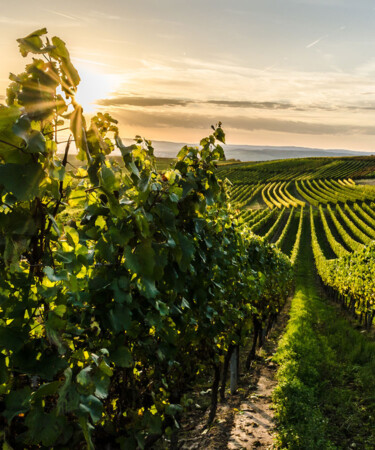Climate change is an established concern within the wine industry, but a recent study has shed more light on the harsh reality of what’s to come.
The review article, published on March 26 in the reputable scientific journal Nature, analyzed how the consequences of climate change — including altered temperature, precipitation, humidity, radiation, and carbon dioxide — will alter the world’s wine-growing regions. The study modeled potential land loss in relation to the severity of the warming scenario, and in the case of temperature-increases beyond 2 °C, the surface area suitable for viticulture in wine-producing regions is expected to decline by 70 percent this century. That includes up to 90 percent of the world’s most traditional regions like Italy, Spain, and Greece.
The study further breaks down these results, stating that 29 percent of the threatened vineyard land might face climate conditions that are too extreme to combat, preventing any further premium wine production. The viability of the other 41 percent of endangered land, according to the data, will hinge on the feasibility of potential adaptation measures.
The world’s current wine regions are typically located between 30 and 50 degrees latitude on either side of the equator. These regions include California, southern France, Spain, Italy, Barossa, Australia, Mendoza, Argentina, and more. The climates of these places have historically been ideal for grape ripening, but rising temperatures and increased radiation are changing the ripening patterns and quality of the grapes. The study states that in most wine regions, higher temperatures have advanced the vine’s growing cycle, with harvests occurring two to three weeks earlier over the past 40 years — changing the wine’s quality and style.
While traditional wine regions struggle with the heat, the warming temperatures are expected to shift the areas of the world that will be conducive to viticulture. “The suitability of current winegrowing areas is changing, and there will be winners and losers,” the study says. “New winegrowing regions will appear in previously unsuitable areas, including expanding into upslope regions and natural areas, raising issues for environmental preservation.”
Although some regions might emerge as new potential wine-producing areas, temperature alone can’t promise their success — soil quality and pre-existing land use are also major factors in the land’s potential. The study also warns that while establishing new wine regions can bring economic opportunity, it could also threaten wild habitats and become a competitor for freshwater sources.
Beyond temperature, the study dives into the impacts water availability, pests, diseases, and carbon dioxide are having on wine production. Severe droughts have posed a major struggle for hot and dry regions over the past several years. The most recent example is in Catalonia, where a current dry spell is forcing Cava producers to adapt; massive brand Freixenet is now using grapes outside of the Cava D.O. to make declassified sparkling wines and meet demand. Additionally, VinePair reported in August 2023 that a surge of extreme weather events including rain, fire, and heat waves proved detrimental to several wine regions in Italy.
As these severe weather conditions continue to impact viticulture, the wine industry will be forced to consider which wine regions will remain viable in the near future — and if 70 percent of the world’s vineyards are truly doomed.
This story is a part of VP Pro, our free content platform and newsletter for the drinks industry, covering wine, beer, and liquor — and beyond. Sign up for VP Pro now!
